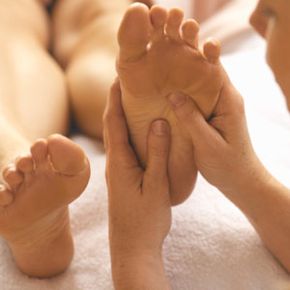For those of us whose mobility depends on our feet, a plantar wart can make daily life a real pain.
Plantar warts look a little different from those on other parts of the body. They're found on the soles of your feet, usually where you bear your weight most -- the heel and ball. These rough growths of skin come in gray, brown or yellow, and what you see is only a tiny part of the wart. The rest is underneath the skin (and much larger).
Advertisement
Plantar warts can go away on their own, but that may take years. Considering the pain and inconvenience they can cause, you want to know how to treat them -- and prevent them from cropping up to begin with.
